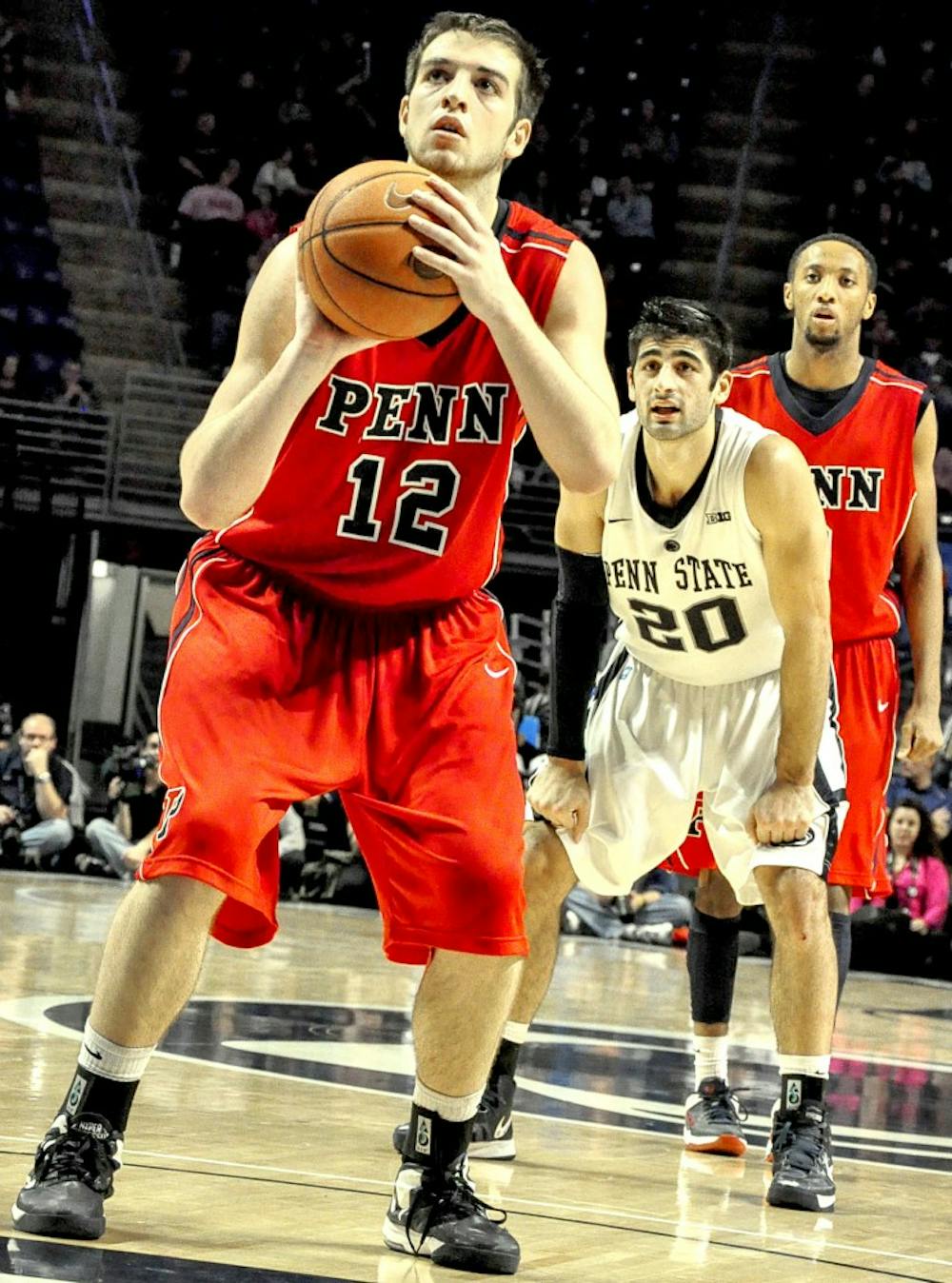
It’s indisputable that Penn’s loss to Penn State was decided in the first half of regulation. Heading to the locker room with a 23-point deficit at halftime is a recipe for ultimately heading to the showers with a loss.
That said, no one could ask for a better response in the second half, when the Quakers made free throws, forced steals, limited turnovers, shot 52 percent from the field and somewhat quietly scored 47 points.
And lost.
The second-half performance was too little, far too late after Penn State’s shooting clinic in the first half.
When the Nittany Lions got open looks in the first half — which they did, early and often — they rarely missed, shooting 59.4 percent from the field in the first half and 45.5 percent from beyond the arc.
Penn State guard Tim Frazier, quite literally, did not miss a two-point shot in the first half. There’s no question that Frazier is a talented scorer, but did Penn really have to make life so easy for him? (In fact, I think his shooting percentage may have been slightly better during the actual game than in warmups.)
Obviously, that’s as much an indictment of the Penn defense as it is a compliment to Frazier and the Penn State offense, since Frazier entered the contest as the Lions’ leading scorer. It should have come as no surprise that Frazier had the capacity to torch the Quakers.
The important question is not when this game was over — because the halftime horn might as well have signaled the end of regulation — but why.
Why did Penn look so flat-footed and ill-prepared at the defensive end in the first half? Did it come down to strategy or motivation, head or heart?
If you ask Dougherty, he’ll tell you it’s the latter.
“It was just about playing harder than the other guy, and they played harder than us,” he said.
Case closed, right? Well, probably not.
Regardless of Penn’s energy and grit, the plan to simply have Jamal Lewis guard Frazier was a nonstarter. Additionally, the Quakers allowed Penn State to shoot threes, rather than running them off and forcing pull-up jumpers. This strategic misstep led to six treys for the Lions in the first half.
In reality, the truth lies somewhere in between. Neither the Xs and Os nor Penn’s adrenaline level fully explains the Quakers’ defensive performance, or lack thereof.
But in either case, responsibility for these struggles falls on Jerome Allen and his coaching staff.
Obviously, coaches shoulder the burden of strategic planning. But they are also responsible for preparing their players mentally and ensuring they enter the game poised, but hungry — ready to play the first half as if it’s the second.
Undoubtedly, the first task is more straightforward than the second. Furthermore, there are many different coaching approaches to developing a team’s psychology. There is no right way. There is just the way that works.
This is reason for concern primarily because teams win conference championships with less than perfect records in a lot of statistical categories, but no team wins without inspiration.
The scoreboard at halftime of Saturday’s game should serve as a reminder of what can happen when that fire is missing.
KENNY KASPER is a junior philosophy major from Santa Rosa, Calif. and a senior staff writer of The Daily Pennsylvanian. He can be reached at dpsports@thedp.com.
SEE ALSO
Penn State handily defeats Penn basketball, 83-71
Penn men’s basketball need to be ‘on guard’ against Nittany Lions
Roundtable: Which Penn basketball youngster will step up?
Phillips| Beating Monmouth was all about effort for Penn basketball
Penn basketball looks to ‘rebound’ at Monmouth
The Daily Pennsylvanian is an independent, student-run newspaper. Please consider making a donation to support the coverage that shapes the University. Your generosity ensures a future of strong journalism at Penn.
DonatePlease note All comments are eligible for publication in The Daily Pennsylvanian.








